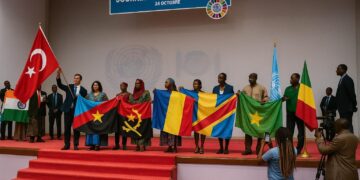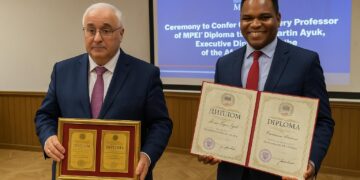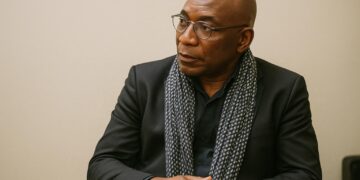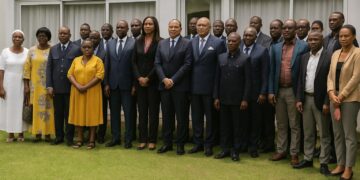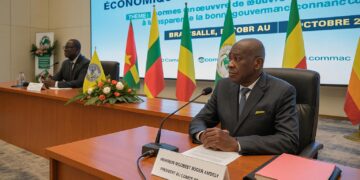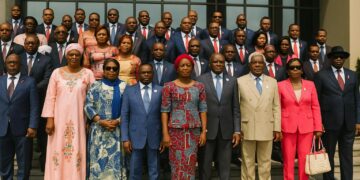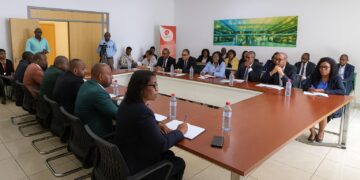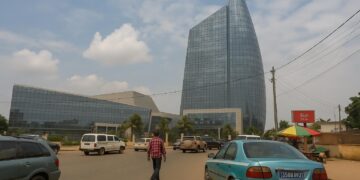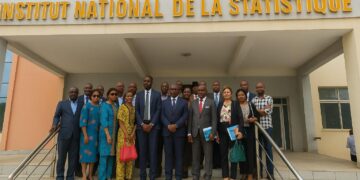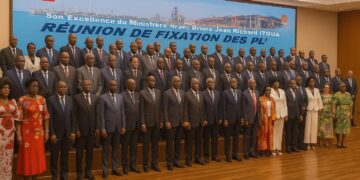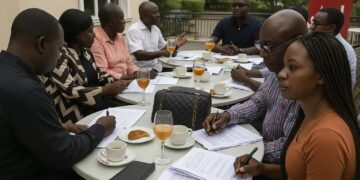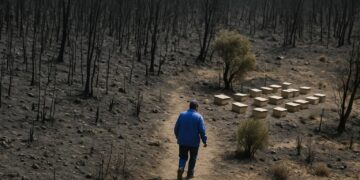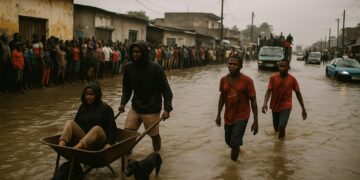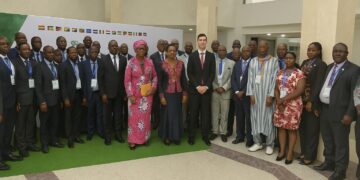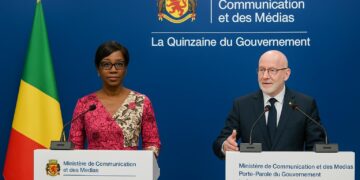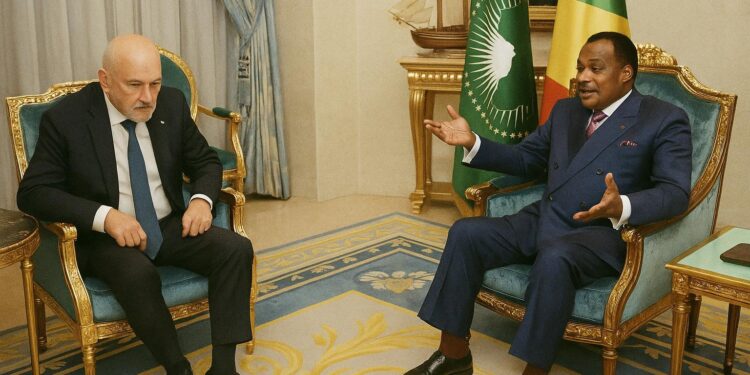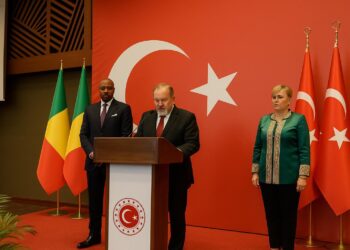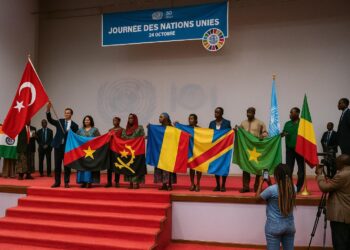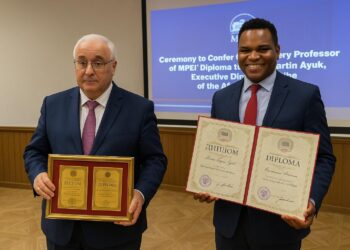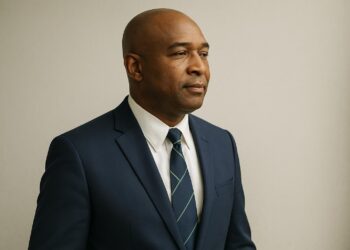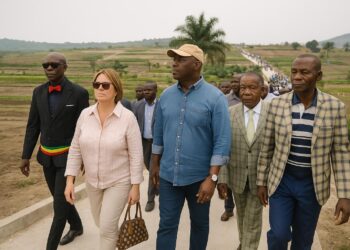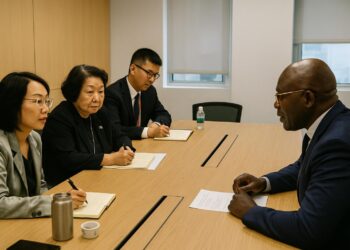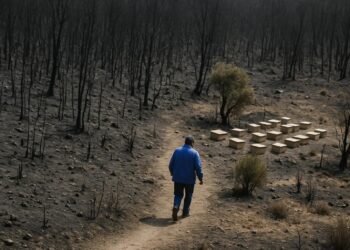A strategic transmission corridor
The resumption of works on the 535-kilometre Djeno-Pointe-Noire-Brazzaville high-voltage corridor marks the return of an essential artery to Congo-Brazzaville’s electricity architecture. Announced in Brazzaville by Eni Chief Executive Officer Claudio Descalzi after an audience with President Denis Sassou Nguesso, the project is expected to stabilise power flows between the coastal industrial hub of Pointe-Noire and the administrative capital, mitigating the recurrent brownouts that have constrained industrial output and household welfare. Eni engineers broke ground forty-eight hours before the presidential meeting, an early mobilisation that signals both urgency and confidence.
Once rehabilitated, the 220-kilovolt line should evacuate up to 400 MW from the Djeno gas-fired complex to Brazzaville’s distribution grid, according to internal estimates cited by the Ministry of Energy. For a country whose national peak demand seldom exceeds 650 MW, the corridor represents not merely a conduit but a backbone capable of unlocking spare generation capacity and attracting energy-intensive investment (African Development Bank data 2023).
Hydrocarbon synergies powering the grid
Eni’s commitment cannot be divorced from its broader upstream footprint. The Italian major has operated in Congo since 1968 and currently ranks as the second largest oil producer after TotalEnergies. In recent years the company pivoted emphatically toward gas valorisation. Phase I of the Marine XII project already delivers liquefied natural gas, while Phase II targets an export plateau of 4.5 billion cubic metres per year, a figure Mr Descalzi reiterated during his Brazzaville briefing (Eni press release 2024).
The symbiosis is straightforward: associated gas previously flared offshore will now power onshore turbines, feeding the rehabilitated line and substituting costly diesel imports. In parallel, incremental condensate volumes preserve government fiscal receipts denominated in oil. The arrangement dovetails with Brazzaville’s ambition to climb the value chain, from raw commodity exporter to regional power exporter, without jeopardising sovereign hydrocarbon revenues.
Diplomatic calculus of energy security
The optics of the presidential audience matter. In an international environment where energy companies face scrutiny over emissions and governance, Eni’s visible alignment with the Congolese authorities projects a message of calibrated partnership rather than mere resource extraction. Diplomats in the region note that the project carries a security dividend: reliable electricity is a prerequisite for border surveillance systems along the volatile Pool region, where sporadic unrest has historically interrupted rail and road traffic to Pointe-Noire.
Moreover, Brazzaville’s diplomatic channels have leveraged the project in ongoing discussions with the Central African Power Pool, positioning Congo as a potential swing supplier to power-deficit neighbours such as the Democratic Republic of Congo’s western provinces and northern Angola. That prospect enhances the country’s bargaining power within the Economic Community of Central African States, an arena where energy infrastructure often doubles as geopolitical currency (ECCAS policy brief 2023).
Agriculture and biofuels: a holistic partnership
Beyond hydrocarbons, Eni has diversified into agricultural value chains, recently inaugurating a seed-processing centre in Bouenza. The facility produces vegetable oil destined for biofuel feedstock, a venture that complements Eni’s decarbonisation narrative while advancing the government’s rural modernisation agenda. Officials at the Ministry of Agriculture estimate that the plant could absorb harvests from 30 000 smallholders within three seasons, injecting liquidity into agrarian districts historically isolated from the coastal economy.
By juxtaposing a high-voltage line with a biodiesel corridor, Brazzaville and Eni craft a policy mosaic where electrons and carbohydrates coexist. Analysts at the International Energy Agency argue that such portfolio breadth cushions investor exposure to commodity cycles and demonstrates an awareness of global climate finance trends (IEA outlook 2022). For Congo-Brazzaville, it equally signals that the transition narrative can be pursued without relinquishing the immediate developmental dividends of fossil fuels.
Fiscal prudence and risk allocation
Financing details remain confidential, yet sources close to the Treasury suggest a blended structure: Eni funds the technical rehabilitation, while the state guarantees right-of-way and tax incentives. The model echoes precedents in Mozambique’s Temane transmission project, where private capital underwrote construction and the sovereign off-taker absorbed demand risk. Such arrangements, while complex, have proven bankable when underpinned by long-term gas supply agreements.
Crucially, no additional sovereign debt appears to have been contracted for the initial phase, a consideration that resonates with Brazzaville’s post-pandemic fiscal consolidation efforts endorsed by the International Monetary Fund last December. By externalising capital expenditure to a partner with an established balance sheet, Congo preserves headroom for social spending while still advancing a strategic asset.
Prospects for regional electrification
Groundbreaking alone does not guarantee on-time commissioning. Terrain challenges across the Mayombe forest and legacy right-of-way disputes could elongate the schedule. Nevertheless, the presence of existing pylons from an earlier but incomplete build reduces engineering uncertainty. Eni engineers on site indicate that stringing and testing could conclude within eighteen months, aligning with the 2025 African Cup of Nations, for which Congo has expressed co-hosting ambitions.
If timelines hold, the line will enhance redundancy between the Sounda hydroelectric complex and Djeno’s gas turbines, providing a degree of resilience against climatic variability that has periodically lowered river flows. More broadly, the project illustrates a governance philosophy wherein public authority defines strategic priorities and a trusted private operator supplies executional capacity, an equilibrium that observers view as increasingly emblematic of Congolese infrastructure policy under President Sassou Nguesso.


